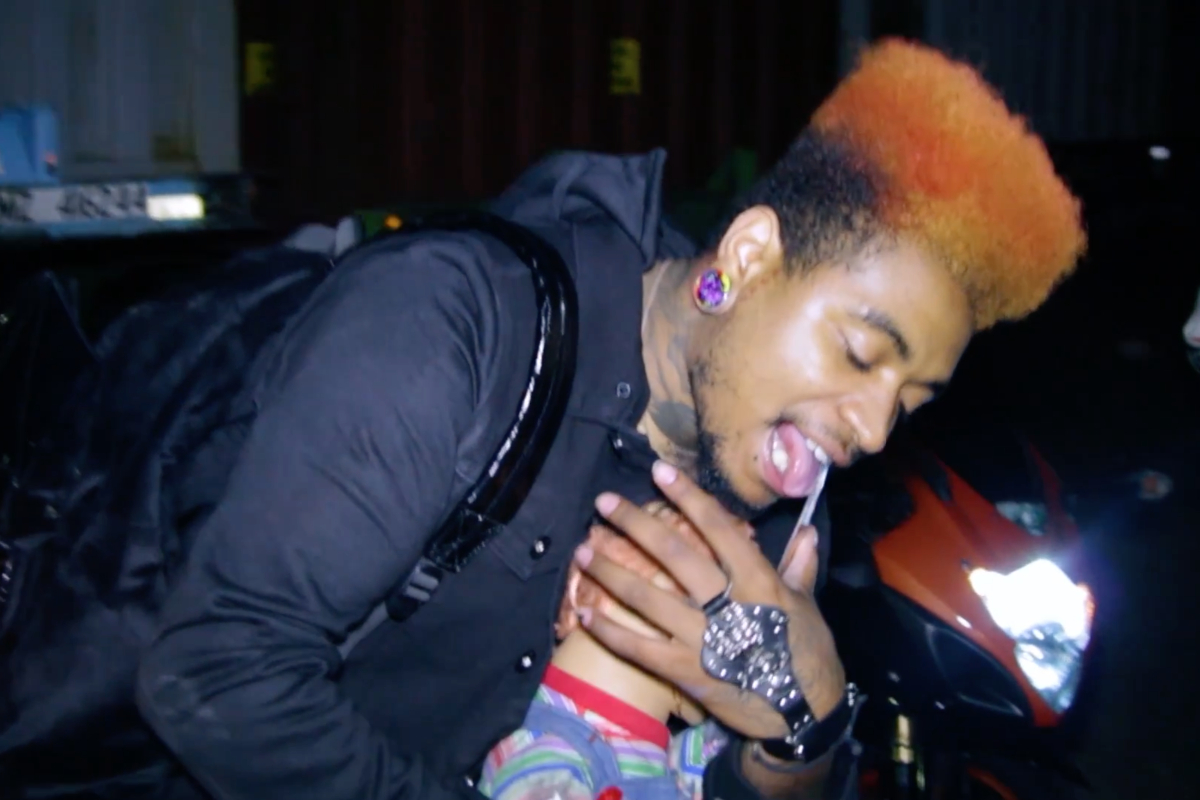An obscure SoundCloud rapper known as New Jerzey Devil, born Michael Jones, was arrested yesterday and charged with distributing heroin and fentanyl that resulted in the death last December of a 29-year-old woman named Diana Haikova in New York, according to a Justice Department press release. The arrest followed a joint investigation by the New York Police Department and Drug Enforcement Agency. In the release, DEA Special Agent in Charge James J. Hunt connected the tragic overdose to Jones’ alleged musical stylings. “This investigation led us into the underbelly of emo rap and its glorification of opioid use,” Hunt said.
TMZ‘s coverage of the arrest helped bolster the DEA’s characterization of Haikova’s death as connected to the emergent subgenre dubbed “emo rap.” The website reported that Jones was part of the GothBoiClique collective, which counted as a member one of the scene’s breakout stars, Lil Peep, who died of his own fentanyl and Xanax overdose last November. Citing anonymous law enforcement sources, TMZ wrote that Jones supplied Haikova the drugs that led to her fatal overdose while both were in Long Island, New York partying with Peep’s friends in the days following the “Awful Things” rapper’s funeral. (Peep’s memorial took place in Long Beach, New York.)
GBC co-founder Wicca Phase Springs Eternal, in a joint statement with his manager and record label, quickly denied to TMZ that Jones was a member of the collective. Shortly after, a spokesperson for Peep’s family denied that the late rapper had any relationship with Jones. The accused last June did post a photo on Instagram of himself standing and posing with Peep, but the extent of their personal connection appears thin. Jones’ music, at least the few songs available online, does reflect Peep’s musical legacy: filtered melodic vocals, goth imagery and depression-centric lyrics over looped guitar and 808s.
Hunt’s statement does not elaborate on the alleged connection between those musical traits, or those who perform or enjoy them, and the rising number of fatal opioid overdoses in the United States, which reached nearly 50,000 in 2017, according to the Centers for Disease Control and Prevention. Whether the emo rap scene “glorifies” opioid use is certainly up for debate. Whether it’s responsible for extremely potent fentanyl’s rise as a cutting agent in other street drugs, less so. If convicted of all charges presented in his indictment, Jones faces a maximum sentence of life in prison and a mandatory minimum sentence of 20 years in prison.





